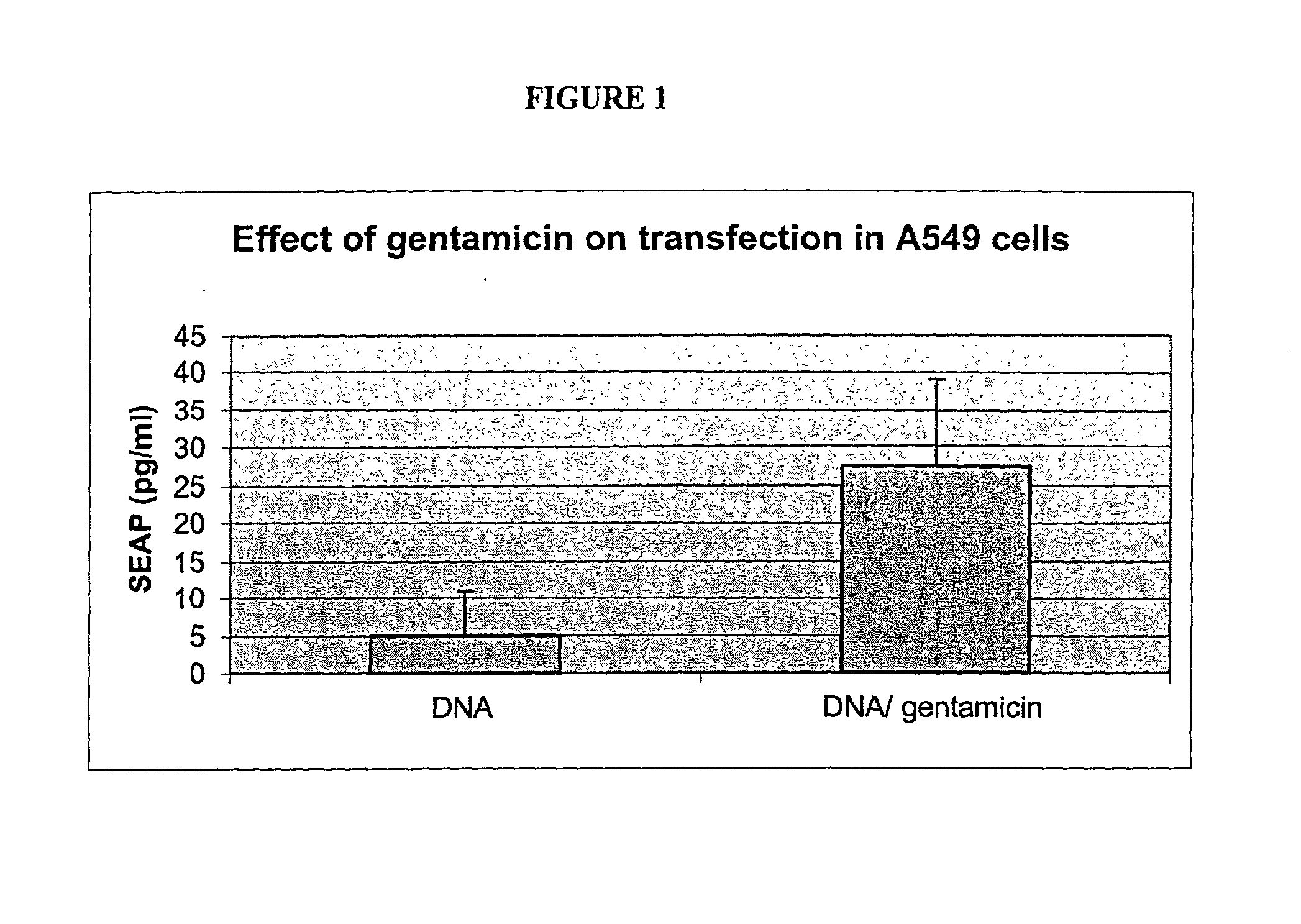Compositions of nucleic acids and cationic aminoglycosides and methods of using and preparing the same
a technology of cationic aminoglycosides and nucleic acids, which is applied in the field of nucleic acids and cationic aminoglycosides, can solve the problems of insufficiently meeting the requirements of current vector systems, concerns about its immunogenicity, and relatively low viral titers, and achieves the major technical limitation of both systems
- Summary
- Abstract
- Description
- Claims
- Application Information
AI Technical Summary
Benefits of technology
Problems solved by technology
Method used
Image
Examples
example 1
[0092] Preparation of Nucleic Acid-Aminoglycoside Complexes
[0093] Plasmid DNA and the three different prototype aminoglycosides (neomycin, gentamycin, tobramycin) were diluted to 2.times. the final desired concentration in separate vials. In formulations with a molar excess of DNA, the diluted aminoglycoside solution was added to the DNA using a pipette with light vortexing. In formulations with a molar excess of aminoglycoside, the DNA was added to the aminoglycoside solution with light vortexing. The formulations were allowed to rest for about 30 minutes before characterization.
example 2
[0094] Effectiveness of Complexing Nucleic Acids and Aminoglycosides
[0095] Complexes of Nucleic Acid-Aminoglycoside were prepared according to the above described method and then analyzed using agarose gel electrophoresis to verify that the nucleic acids were being complexed with the aminoglycosides.
[0096] Specifically, complexes having varying doses of DNA to three different aminoglycosides were prepared such that plasmid DNA was complexed with 5-100 mM of Neomycin, Tobramycin and Gentamicin. The results showed a dose-dependant increase in gel retardation, suggesting that the DNA was getting complexed with the aminoglycoside.
example 3
[0097] Stability of Nucleic Acid-Aminoglycoside Complexes
[0098] Complexes of Nucleic Acid-Aminoglycoside were prepared according to the above described method and then challenged with the endonuclease Dnase I.
[0099] The results indicated that the DNA complexation with the aminoglycosides were resistant to, or have conferred stability against, nuclease degradation.
PUM
| Property | Measurement | Unit |
|---|---|---|
| average molecular weight | aaaaa | aaaaa |
| aerodynamic diameter | aaaaa | aaaaa |
| aerodynamic diameter | aaaaa | aaaaa |
Abstract
Description
Claims
Application Information
 Login to View More
Login to View More - R&D
- Intellectual Property
- Life Sciences
- Materials
- Tech Scout
- Unparalleled Data Quality
- Higher Quality Content
- 60% Fewer Hallucinations
Browse by: Latest US Patents, China's latest patents, Technical Efficacy Thesaurus, Application Domain, Technology Topic, Popular Technical Reports.
© 2025 PatSnap. All rights reserved.Legal|Privacy policy|Modern Slavery Act Transparency Statement|Sitemap|About US| Contact US: help@patsnap.com

